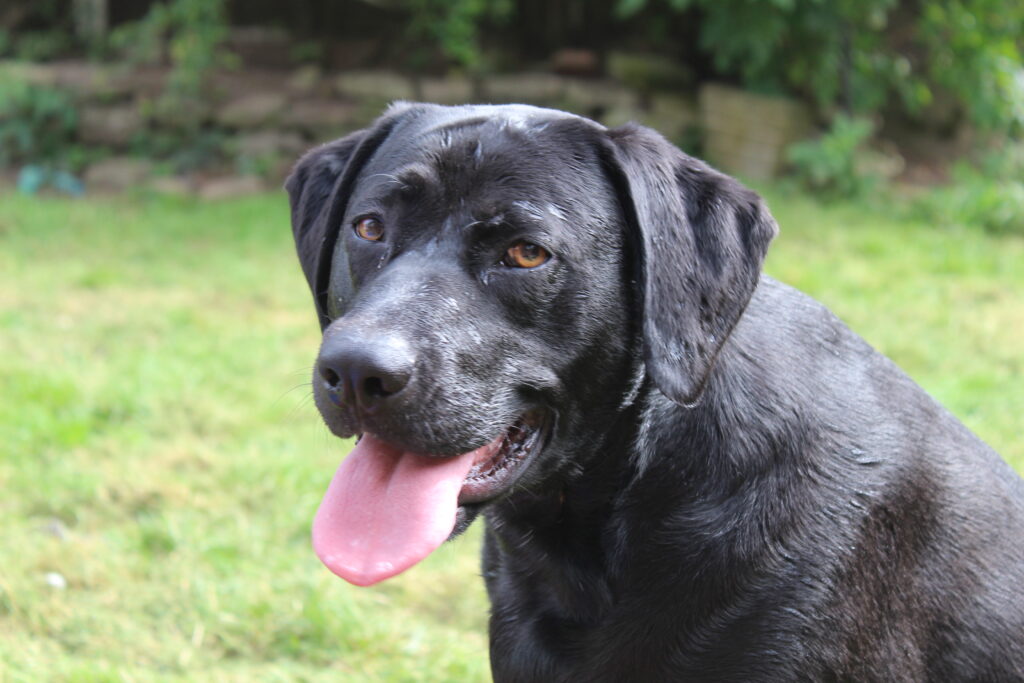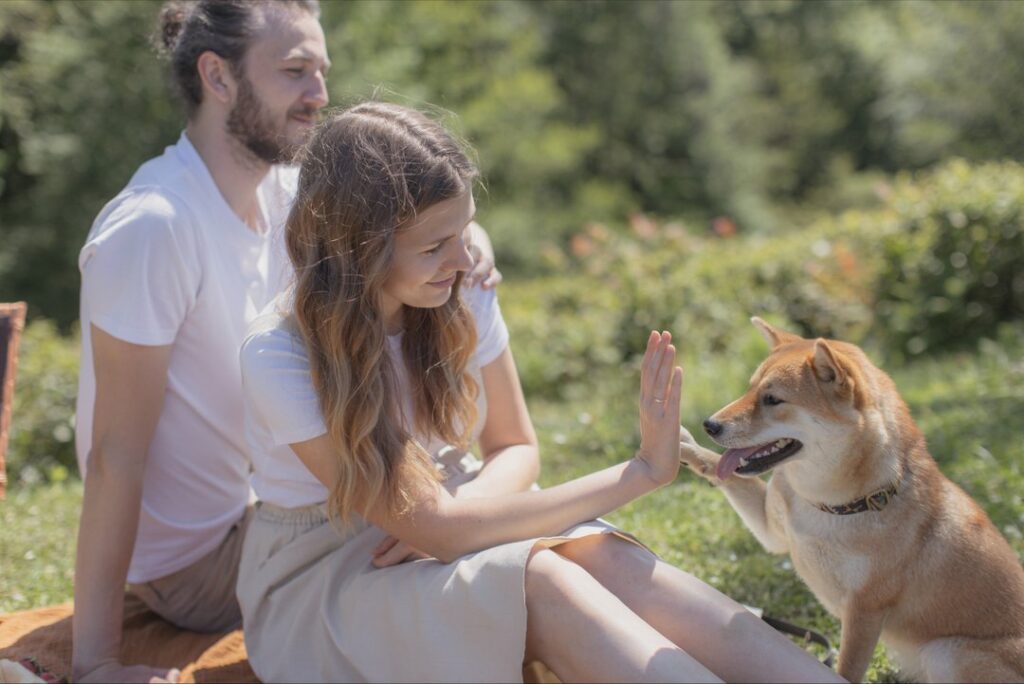Be Canine Kind
Top Dog Training Tips for Beginners
Top Dog Training Tips for Beginners

By Perky Tails
There are plenty of persistent myths about dog training. People say an old dog can’t learn new tricks, but also give (incorrect) dog training tips for figuring out when your young dog is old enough to begin. The fact of the matter is, there isn’t one “right” age to start training your dog. Overall (and most importantly) it’s always easier to learn how to train your dog to do something than it is to figure out how to un-train a bad behavior, then re-train a new behavior on top of it. The best time to start dog training — whether you use dog training toys, or not — is before your dog begins to do any bad behaviors. Your dog will always mirror what you bring to your dog training activities, so if you are agitated, reactive, and inconsistent, he will struggle to be calm, trusting, and submissive.
It’s true that puppies (and, often, dogs used to living with other dogs) are hardwired to follow a pack leader. So all the advice for training your dog that calls on your to be the Top Dog is actually correct. Dogs respond really well when their people are assertive. Puppies, young dogs, and high-energy dogs also respond exceptionally well to using dog toys for training. That said, lower-energy and older dogs can still learn from dog training with toys — they just need a confident leader who brings enough energy to use play as a reward! Keep reading to find out how to train and maintain a balanced, confident, and obedient dog right from the get-go. And when you’re ready to start training your dog, check out our full line of dog training toys to see how our products can help you effectively use play as a reward!
PART 1: If It Walks Like A Dog, Talks Like A Dog, & Squeaks Like A Toy… It’s Probably Well-Trained
1. The best dog training starts with this one piece of advice for training your dog:
The first rule of dog training with toys (and without) is to always communicate with your dog, like a dog. Dogs practice a kind of dog-to-dog obedience training, so watching them can reveal good dog training tips. Understanding that they can’t get away with disobedience is essential to how they communicate. That’s why dogs never repeat the same command to each other twice — at least not without escalation. The top dog growls once (remember, growling is just talking!), then the other dog(s) change their behavior. If they don’t, the conversation gets progressively louder and more assertive (with louder growling, then barking and/or lunging, then physical contact). Play is one of their biggest tools for teaching these lessons.
The best dog training tips aim to mimic these dog-to-dog conversations since learning their language is the most effective way to start training your dog. It follows, then, that your command is equivalent to their growl. Likewise, your stern voice and/or movement into their space is their louder growling, barking, and/or lunging. Your jab, prod, or scruff is their physical contact. Using dog toys for training, like their play practices, is a natural way to teach them.
2. As soon as you start training your dog, NEVER EVER SAY A COMMAND MORE THAN ONCE!
In dog training, consistency is key. Whether you’re getting private dog training, attending a canine obedience course, or at home playing with dog training toys, you should always remember your dog’s training rules. For example, only instruct your dog to sit, “leave it,” or heel once without using an action. If he ignores you, always escalate; repeat it (more stern) while encroaching on his space or pushing his bottom down. Then reward him with a dog training toy when he starts to comply with your first command. Do this consistently, and your dog will learn to love following your commands the first time you ask.
Asking nicely multiple times lets your dog get away with not listening. And if you do that, he’ll learn that he doesn’t even need to think about listening until you’ve asked a few times. That behavior won’t work when your dog is off-lead. Then, you may not be close enough to touch your dog, so you won’t always be able to escalate. The best way to avoid getting stuck in that situation is to start training your dog not to need that escalation at all.

PART 2: The Road To Success Is Always Under Construction
3. Learning how to train your dog is all about learning how to set him up for success & incentivise hard lessons.
The best dog training teaches dogs to do something by rewarding them, not not to do something by punishing them for it. That’s why my advice for training your dog is to set him up for success when he’s learning, and also why using dog toys for training is one of the most effective practices. By enabling and rewarding the right behavior with dog training toys, you’ll teach your dog two things: first, to do the right thing when you ask, and second, that listening to you is more fun than ignoring you.
Consequently, you shouldn’t ask your dog to do something when he’s too distracted to listen. For example, if your dog pulls/lunges at other dogs when you’re walking him, the “right thing” he needs to learn from dog training is to heel. But until he can heel really well when he’s less distracted (and less motivated not to), he’ll still probably ignore you when he sees another dog, no matter how much you escalate the command. The best thing you can do, then, is to turn him and walk in another direction before the wrong behavior starts and use play as a reward when he stays focused on you. That way, he won’t learn to ignore you.
4. The best dog training practices will set you up for success, too.
Even when you’re not in a formal private dog training session or canine obedience course, you’re still training your dog every time you interact with him. Whether you mean to use play as a reward or not, it always is! That’s why one of my favorite pieces of advice for training your dog is to avoid situations where you’re likely to break the rules. Yes, you should consider whether your dog will listen to your commands/escalations… but you should also ask whether you’ll be able to give and escalate commands in any situation.
To that end, until you have good verbal recall, you should only let your dog off-lead in safe spaces and only call him when he’ll probably obey. Otherwise, he’ll ignore your call, and you’ll likely call his name repeatedly or prematurely offer his dog training toys to get his attention (undermining your other dog training efforts). If you find get into this situation, my advice for training your dog is simple: call for him once, loudly/clearly, then say “come” while turning/walking away, then use play as a reward when he learns to come the first time you call. That way, you’ll escalated your command and reward obedience appropriately, and your dog will learn that you won’t wait for him (which will feel natural since dogs don’t wait for each other, either). This will teach your dog that listening to you the first time is his top priority and that his off-lead adventures come second.
5. One of the most effective dog training tips is to reinforce the right things when your dog does them naturally.
Figuring out how to train your dog to be less out-of-control excited about things he loves may feel near-impossible, especially if you’re trying to use dog toys for training and your dog gets out-of-control excited about play. But even a dog who hasn’t had much dog training does the “right things” on his own, sometimes! You can use your dog’s natural behavior for his just like intentional training time.
Remember, it’s easier to teach your dog to do something than not to do something; your dog (reward-motivated beast that he is) runs on play and positive reinforcement. So you should wait until your dog is calm to take him for a walk, then exit (and enter) before him so he’s literally following your lead. Also remember to only use his specific dog training toys for training rewards, not regular playtime. The walk will reward whatever your dog was doing right before it the same as when you use play as a reward (because both are fun!). If he can only get those things on your terms, he’ll be real motivated to figure out what those terms are. Plus, dog training tips almost all note that an over-the-top excited dog is already distracted, so starting the walk off that way sets your dog up to fail.
6. When you start training your dog, some body language changes have to be immediate.
Excitable dogs and those who haven’t had much dog training are prone to do something that seems cute, but actually carries a lot of behavioral significance to them: jumping up on people. Regardless of your other dog training goals and what the best dog training outcome would look like to you, jumping up on people is one of the first behaviors you should correct. This can be especially difficult when you’re using dog toys for training or using play as a reward since jumping is a common play behavior.
In dog-to-dog interactions, jumping is only acceptable under narrow conditions. There comes a time in every dog’s life when it’s just not appropriate most of the time, and other dogs correct it with an open-mouthed bite, often to the side. Consequently, popular dog training tips for jumpers range from avoiding giving them their dog training toys immediately after they jump to pushing them back while making some vocalization and giving their side a quick pinch. The pinch will remind your dog of the bite (making it make sense to him), and he’ll associate the noise with the pinch so you can use it as a corrective tool in other situations.
7. Really, some of the best dog training tips focus on body language and attitude.
Remember my number one piece of advice for training your dog: communicate with your dog, like a dog. This is true even (and especially) for your body language. When on walks or practicing, make sure that your dog is always behind you — or next to you — but never in front of you. If your dog walks ahead of you, you’re following his lead; he encounters everything first, so he decides how to react. If you overrule him from behind, he’ll be confused and more likely to ignore your commands, even if you bring along dog toys for training practice along the way.
You can get the best dog training body positioning by using a slip lead around the very top of your dog’s neck, near his jaw and behind his ears. Then give it a tick if he tries to pull ahead of you. When using the lead, my best advice for training your dog is not to consider it a matter of being aggressive. You should always stay calm, but remember that if you don’t assert yourself as the leader, your dog will step up!

PART 3: Everything Always Comes Back To Table Manners
8. Once you start training your dog, there’s no room for his impatience at the dinner table.
Whether you’re preparing human food or dog food, time in the kitchen tends to be a great time for dog training. That’s because almost all dogs — whether they’re excitable or not — love food and want to be as close to (eating) it as possible. When preparing human food, my best advice for training your dog is to keep him out of the kitchen; this is just one of those situations where neither of you are set up for training success since he’s excited and you’re distracted. To prevent accidental food rewards for bad behavior, teach your dog to stay sitting or lying down outside the kitchen. Learning a “stay” command like this can be hard, so make sure to start out with a very short duration and a valuable reward (like play as a reward for his patience) before making the duration longer. You can also use dog toys for training in this situation by having a designated pre-dinner dog training toy that your dog only gets to have when he’s behaving appropriately.
Similarly, when you’re preparing your dog’s food, you should aim to only reward the right behaviors. Keeping in mind that your dog will interpret getting what he loves as a reward for whatever he was just doing, it’s essential that you withhold giving him either food or play as a reward until he is calm and following your commands. That said, don’t ask too much from him all at once… food is so exciting!
9. Even in dog training, there’s no such thing as a free meal.
The best dog training gives no rewards without first asking for certain (right) behaviors. It follows, then, that one of my favorite dog training tips is to take your dog for a brisk walk or take a dog toy out to the yard to exercise your dog before meals. That way, his meal feels like a reward for his work. You can also easily incorporate dog training toys into this routine by teaching your dog to fetch a specific toy before getting his meal. While using play as a reward is a great tool for most behaviors, food usually trumps toys as a more valuable reward, so your dog shouldn’t have too much trouble trading for it!
This same ideology applies to food treats, whether they come from you or from other people in your dog’s life. Ask your guests and people who interact with your dog to follow your specific dog training rules, so your dog doesn’t get mixed messages about the right thing to do in any given situation. Similar thinking should also apply to training with dog toys. Whether you have designated dog training toys or not, you should ask your guests and other people in your dog’s life to follow your lead (as he does!) when it comes to the best ways to use play as a reward for his behavior.
10. When giving rewards, like food or dog training toys, make sure your dog waits, takes, and uses his reward appropriately.
When presenting food or dog training toys to your dog, make sure he isn’t jumping up on you or trying to take the reward from you. The best dog training rules for these moments include making your dog sit down, be quiet, and maintain eye contact. He should also take the food, treat, or toy calmly, without nipping or ripping it away from you. If your dog is over-eager and trying to take the reward, my advice for training your dog to be more calm is to wait. If he won’t wait, consider placing the reward on the ground out of his reach then having him wait for permission to get up/go to it. If your dog gets over-excited about food rewards and eats too quickly, you can also explore slow-feeders and treat-dispensing toys to help keep him healthy.
Once your dog is done or you are ready to move on to another activity, remove unfinished food or designated dog toys for training from him. If you want something to remain a valuable dog training reward, your dog can’t have constant access to it!
